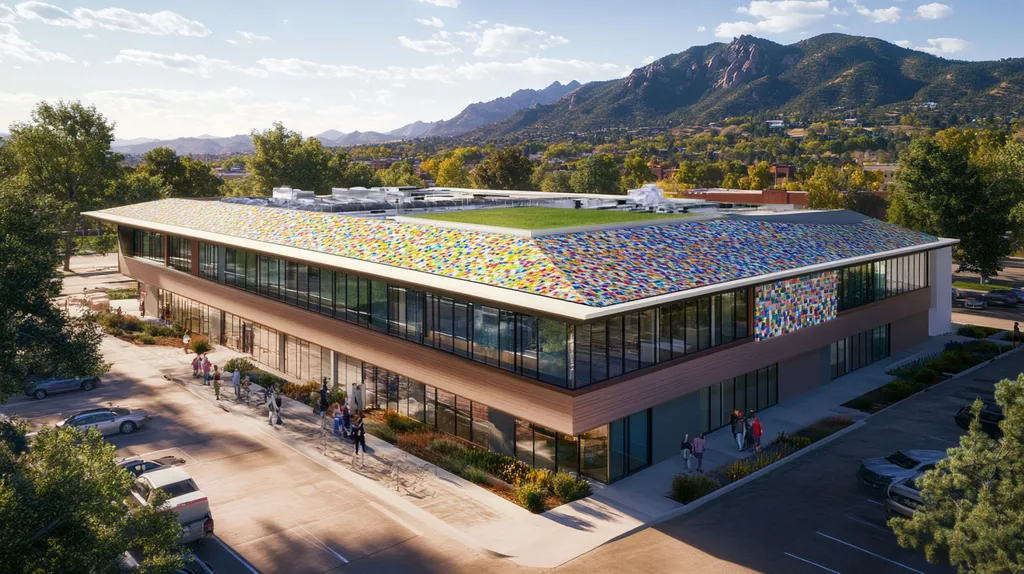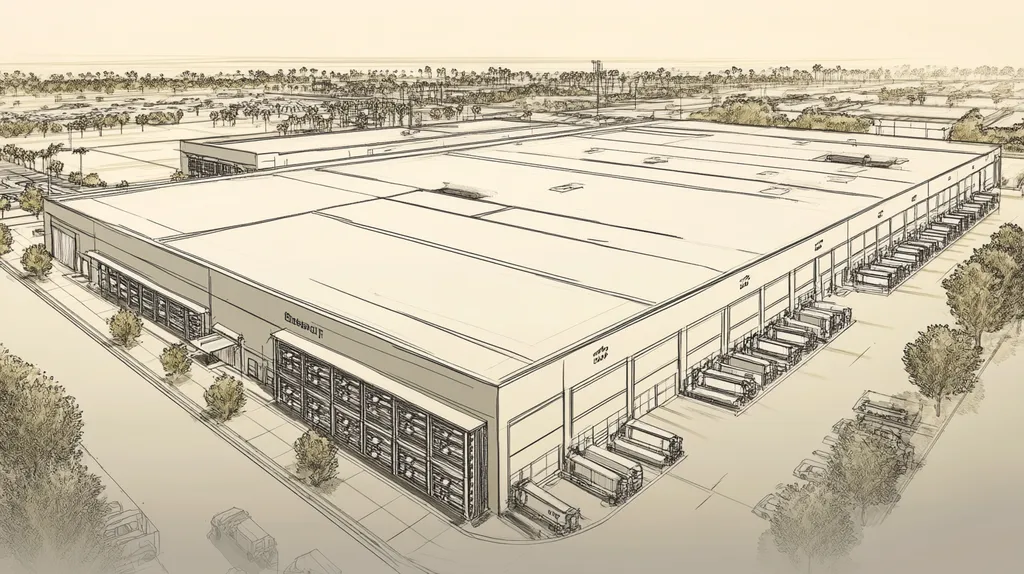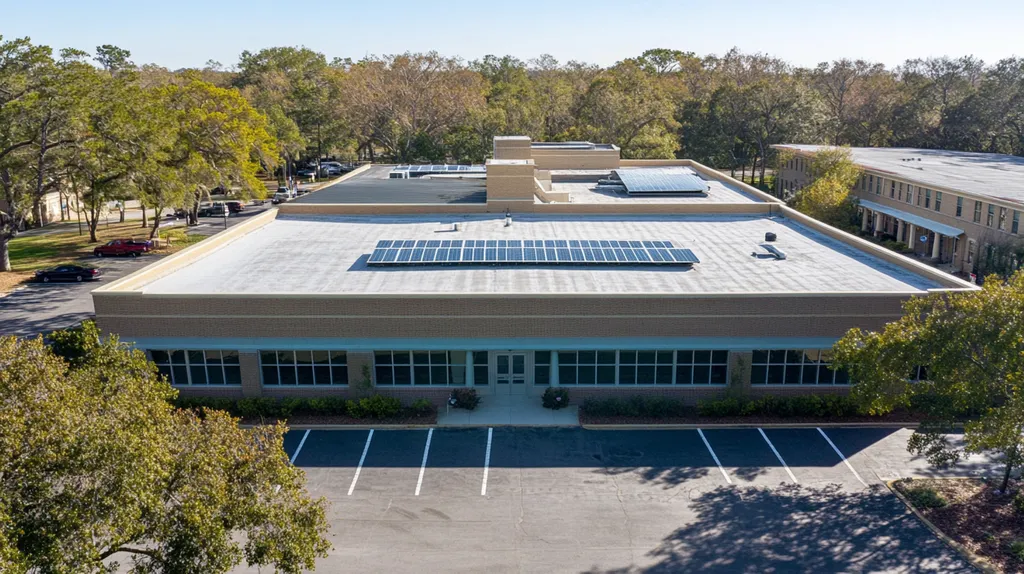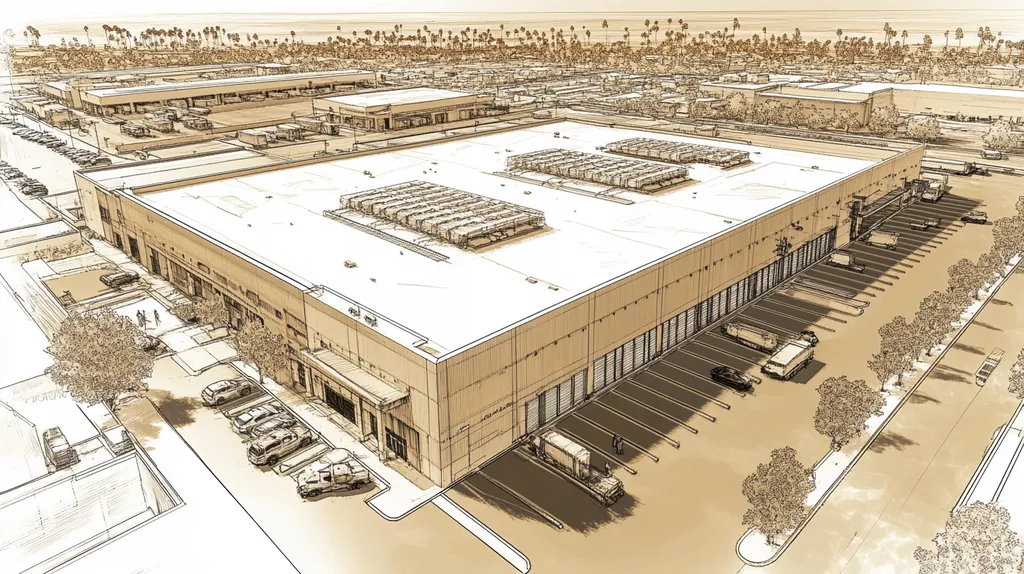Commercial property owners face mounting challenges from pest infestations, with industry data showing roof damage from rodents and insects costs businesses over $500 million annually in repairs and structural remediation.
Selecting appropriate pest-resistant roofing materials has become a critical decision that directly impacts both immediate maintenance costs and long-term property values.
This comprehensive guide examines key performance factors, financial implications, compliance requirements, and operational procedures for implementing effective pest-resistant roofing solutions in commercial and industrial settings.
SECTION 1: PERFORMANCE FACTORS
The materials chosen for commercial roofing play a critical role in maintaining the building’s integrity. As pests increasingly target susceptible roof areas, using pest-resistant materials is vital to prevent costly damage, which can exceed $10,000 annually for some properties. This section examines key performance factors in pest-resistant roofing materials—vital considerations that property managers and owners must take into account, including durability, environmental resistance, and pest-deterrent features.
Material Durability and Lifespan
Durability is a pivotal factor in a roofing material’s capacity to resist pests. Choosing high-quality options like metal, TPO (thermoplastic olefin), and EPDM (ethylene propylene diene terpolymer) can significantly extend the lifespan of a roof; for example, EPDM can last over 25 years with proper upkeep.
A durable roof translates to fewer repairs and less operational disruption. Property managers often experience cost savings over time when investing in sturdy materials, as fewer maintenance issues arise. Routine inspections are also beneficial, dramatically prolonging the lifespan of these materials.
Additionally, a solid warranty serves as an indicator of quality. Manufacturers that offer warranties exceeding 20 years typically stand behind the durability of their products. Property owners should focus on selecting materials backed by long-term warranties to enhance longevity.
Key Action Items
Environmental Resistance Capabilities
Environmental resistance is essential for commercial roofs, which face UV rays, heavy rainfall, and temperature fluctuations. Materials that excel in environmental resistance help prevent issues that may entice pests to invade.
For example, materials that can resist harsh UV exposure help prevent the formation of gaps where pests can enter. Options like coated metal roofs are engineered to reflect UV rays and enhance material longevity.
Water resistance is another key factor, as improper drainage can create conditions favorable to pests. Utilizing materials designed with effective drainage solutions can significantly enhance a roof’s overall durability while deterring pests.
Key Action Items
Pest-Deterrent Features Evaluation
Assessing pest-deterrent features is vital for property owners looking to safeguard their assets. Certain roofing materials are purposely designed with pest-repelling characteristics, such as reinforced surfaces and treatments that deter pests.
For instance, composite roofing materials can include pest-repellent additives to help curtail infestations before they escalate. Additionally, choosing designs with fewer seams can minimize entry points for insects.
Furthermore, educating maintenance teams about pest behavior can enhance preparedness. By understanding the vulnerabilities within roofing systems, they can respond swiftly to any signs of infestation. Regular inspections will help to identify weaknesses that need addressing.
Key Action Items
SECTION 2: FINANCIAL CONSIDERATIONS
For property owners and facility managers, choosing the right roofing materials is an urgent matter that influences both immediate budget and long-term financial health. With pest infestations capable of inflicting significant damage and causing operational delays, investing in pest-resistant roofing materials isn’t just wise—it’s a critical financial decision. Understanding the initial costs, maintenance needs, and long-term savings associated with these materials is essential for protecting valuable assets over the decades.
Initial Installation Costs Analysis
While the upfront costs of pest-resistant materials can be higher than standard options, it’s crucial to weigh these against potential long-term savings. Traditional roofing may seem cheaper at first, but it often lacks the durability and pest-repelling features found in specialized options. For instance, conventional TPO roofing might be priced at $2.50 per square foot, whereas pest-resistant systems can start around $3.25.
Ultimately, this price difference can be offset by longer lifespans and the reduced frequency of roof replacements, representing a smart investment that pays off over time. Property owners can further enhance their savings by considering decreased pest control costs, which can accumulate significantly. A total cost of ownership analysis is recommended to gain a clearer picture of financial impacts.
Additionally, several manufacturers provide warranties that cover pest damage, offering extra financial protection. Opting for pest-resistant materials allows property managers to avoid unforeseen costs related to pest damage, cementing the initial investment’s rationale.
Key Action Items
Maintenance and Repair Expense Projections
Maintenance and repair costs for commercial roofing systems represent significant financial factors that property managers cannot ignore. Pest infestations can inflict extensive damage, leading to expensive repairs when left unaddressed. Conducting routine inspections and preventative maintenance can effectively identify issues before they worsen. To fully appreciate the financial advantages of pest-resistant materials, managers should plan for these long-term costs.
Roofs designed to resist pests typically require less frequent upkeep, ultimately saving both time and labor. Studies indicate that pest-resistant roofs can last up to 20% longer than their conventional counterparts, allowing for fewer repair expenses over time and effectively lowering the overall lifecycle cost of the roofing system.
Moreover, incorporating pest-resistant features can diminish additional costs associated with pest management, such as pest control services and cleanup operations. For instance, a commercial building that invests in pest-resistant roofing materials may reduce annual pest control expenses by up to 50% compared to those using standard materials.
Key Action Items
Long-Term Cost-Effectiveness Evaluations
Evaluating the long-term cost-effectiveness of roofing choices reveals significant financial benefits associated with pest-resistant materials. Although the upfront investment may be steeper, cumulative savings can justify the additional costs. An effective roofing system that successfully wards off pests can lead to reduced expenses concerning maintenance, repairs, and pest control over its lifespan.
Energy efficiency also plays a crucial role in evaluating long-term costs. Certain pest-resistant materials offer improved insulation properties, which can lead to reduced energy bills. Research suggests that buildings utilizing enhanced insulation can save up to 30% on annual energy expenses.
Beyond maintenance and energy-related savings, pest-resistant materials often contribute to increased property value. Properties that illustrate thoughtful maintenance decisions tend to attract more potential buyers or renters, leading to expedited occupancy and potentially higher rental rates.
In summary, while the initial costs of pest-resistant roofing solutions may be higher, their long-term financial benefits make them a worthy investment. Comprehensive financial assessments will highlight a favorable return on investment, establishing pest-resistant materials as not only a protective measure but also a sound financial strategy for property professionals.
Key Action Items
SECTION 3: COMPLIANCE REQUIREMENTS
Compliance with regulations is essential for property professionals considering pest-resistant roofing materials. Navigating these requirements ensures roofs are both constructed and maintained within legal frameworks. Given the rising costs associated with pest damage, meeting these standards not only mitigates legal risks but also promotes cost efficiency over the long term. This section highlights the critical compliance factors necessary for making informed roofing choices.
Regulatory Framework for Pest Control
A variety of regulatory frameworks govern pest control within construction and maintenance. Federal guidelines from agencies such as the Environmental Protection Agency (EPA) set critical pest management standards that roofs must adhere to. Compliance with these regulations is vital in avoiding legal complications while enhancing a property’s resilience to pest issues.
Additionally, many states impose stricter pest control regulations, such as California’s robust laws requiring proactive pest management steps from property owners. Familiarity with these legal nuances is crucial to ensure that chosen roofing materials align with prescribed standards.
Failure to comply can result in substantial penalties and necessitate costly rework or replacement of roofing materials. Staying updated on regulatory changes is essential for property professionals seeking to avoid these pitfalls and improve pest resistance through certified materials.
Key Action Items
Industry Standards for Pest Resistance
Adopting industry standards is fundamental in identifying effective pest-resistant roofing materials. Organizations such as the American Society for Testing and Materials (ASTM) establish specifications that outline the performance characteristics for these materials. Adherence to these standards guarantees that roofing systems can withstand common pest threats, including insects and rodents.
Leading manufacturers often attain certifications signifying their products’ pest resistance. For instance, roofing membranes made from materials like TPO and PVC are not only energy-efficient but also resistant to pest nesting due to their material properties.
Choosing approved materials aligns with industry standards, promoting a safer environment and minimizing ongoing pest management costs. Regular assessments of roofing systems in line with these standards help prevent unexpected failures and ensure enduring effectiveness.
Key Action Items
Local Building Codes and Ordinances
Local building codes and ordinances play a crucial role in the installation of pest-resistant roofing materials. These regulations specify permissible practices for roof construction and repairs, and non-compliance can lead to project delays and hefty fines.
Regions experiencing specific pest issues may enforce additional resistance requirements for roofing materials. Moreover, local laws might necessitate regular inspections to maintain compliance and assess ongoing pest risks.
Engaging with local building authorities provides key insights, helping identify both obligations and advantages regarding selected roofing materials. Addressing local codes early in the planning stages can save property professionals from expensive oversights while ensuring smoother project execution.
Key Action Items
SECTION 4: RISK MANAGEMENT
Pest-related damage can lead to significant financial burdens and operational disruptions for commercial properties. These infestations can cause structural damage and material degradation, with approximately 20% of repair costs stemming from pest issues. Addressing these risks effectively is crucial for property owners and facility managers. This section will explore liability issues, insurance considerations, and emergency response strategies to manage pest-related risks effectively.
Pest-Related Damage and Liability
Pests can severely compromise the integrity of roofing systems, leading to costly leaks and water damage. Property owners become vulnerable to increased liability if pests harm tenants or visitors. Legal claims can result from pest-related property issues, potentially leading to hefty financial penalties. Hence, a robust risk management strategy is vital for minimizing exposure to these risks.
One effective approach is to opt for pest-resistant roofing materials, such as metal or specially treated membranes, which help mitigate infestation risks. By integrating these materials, property owners can significantly minimize liability and protect their investments.
Regular inspections play a vital role in identifying potential points of pest entry. Implementing a clear documentation process for inspections helps track ongoing issues and serves as evidence in liability disputes. Training staff to recognize signs of pest activity enables timely interventions, while forming relationships with pest control professionals provides immediate support when challenges arise.
Key Action Items
Insurance Coverage and Claims Process
Understanding the nuances of insurance coverage related to pest damage is essential for property owners. Many standard insurance policies may not cover damages caused by pests unless specific clauses are stipulated. Reviewing policy details with an insurance broker can ensure proper coverage for pest-related issues.
Navigating the claims process in the event of an infestation can be challenging. Thorough documentation is critical; property owners should maintain detailed records of pest activity and damage incurred, along with the actions taken to resolve these issues. This comprehensive recordkeeping increases the likelihood of a successful claim.
Engaging with insurance professionals knowledgeable in commercial properties can provide valuable insights for customizing coverage to meet the facility’s needs. Regular assessments and updates of insurance policies ensure alignment with evolving pest management strategies and provide greater financial security against unforeseen pest-related costs.
Key Action Items
Emergency Response Planning Strategies
An effective emergency response plan is essential for quick resolution of pest infestations. Rapid action prevents minor pest issues from developing into major problems. Property managers should establish clear procedures for identifying, reporting, and addressing pest threats.
Creating a communication plan that outlines roles during a pest emergency helps ensure everyone knows their responsibilities. Training employees on immediate actions to take fosters a culture of preparedness, while designating specific tasks, such as contacting pest control, streamlines responses.
Regular drills on emergency procedures enhance readiness, while checklists for quick action are invaluable during actual situations. Considering potential pest scenarios, such as rodents or insects, aids in crafting a more effective response plan. Annual reviews of the emergency procedure ensure ongoing effectiveness, allowing for adjustments based on feedback from past occurrences.
Key Action Items
SECTION 5: OPERATIONAL PROCEDURES
Timely operational procedures are crucial for commercial property owners to ensure their roofs perform sustainably and avoid costly disasters. Annual inspections can identify vulnerabilities before pests invade, ultimately protecting the roof and enhancing property value. Pest-related damages can escalate quickly, leading to expensive repairs and disruptions. A robust maintenance protocol is essential for safeguarding against these issues.
Roof Inspection and Monitoring Protocols
Regular roof inspections are essential for identifying pest entry points and vulnerabilities. Property managers should implement a schedule that includes biannual professional inspections and monthly self-checks. Focus areas should include seams, flashing, and drainage systems where pests often gain access.
Additionally, monitoring for signs of pest activity, such as droppings or nests, is crucial. A digital tracking system can help document findings quickly and schedule necessary follow-ups, enabling early detection and efficient maintenance planning.
Leveraging technology, such as drones or thermal imaging, enhances inspection visibility, making it easier to identify hidden damages without excessive manpower. Staff training on inspection importance fosters a culture of vigilance, ensuring that team members report any unusual signs promptly.
Pest Control and Prevention Measures
Implementing effective pest control and prevention measures is vital for preserving the integrity of commercial roofs. Utilizing pest-resistant materials, such as metal or specially treated membranes, can create barriers that deter infestations while providing long-term savings.
Incorporating natural deterrents and eco-friendly pest management solutions reduces chemical exposure. Regular use of non-toxic repellents combined with habitat removal strategies significantly reduces the chances of infestations and promotes a safe environment.
Creating a landscape management plan is essential. Preventing overhanging branches from reaching the roof and ensuring effective drainage can minimize pest attractions. Collaborating with landscape maintenance teams is key to maintaining an ecosystem that discourages pests.
Key Action Items
Repair and Replacement Procedures
When pests cause damage to a commercial roof, prompt repair and replacement are critical to prevent further issues. Property managers should develop a rapid response protocol to address roofing problems quickly, mitigating additional risks.
Regular maintenance significantly extends roof lifespan. Keeping comprehensive records of past repairs allows teams to identify recurring issues and their causes, aiding future material upgrade decisions. Investing in high-quality, pest-resistant materials for repairs helps reduce future infestations.
Establishing an emergency fund for unexpected repairs ensures financial resources are available when urgent problems arise, safeguarding the property’s integrity while maintaining budgetary control.
Key Action Items
SECTION 5: OPERATIONAL PROCEDURES
For commercial property owners, implementing timely operational procedures for roofing is crucial. Regular inspections can highlight vulnerabilities before pests penetrate, safeguarding both the roof’s performance and the overall property value. Pest-related damages can escalate swiftly, resulting in hefty repair costs and operational interruptions. Establishing a solid maintenance protocol is essential to avoid these issues.
Roof Inspection and Monitoring Protocols
Conducting regular roof inspections is key to spotting potential pest entry points. Property managers should create a schedule consisting of biannual professional assessments and monthly self-checks. Focus areas should include seams, flashing, and drainage systems, where pests are likely to infiltrate.
Monitoring signs of pest activity, such as droppings or nests, is also crucial. Utilizing a digital tracking system allows for prompt documentation of findings and scheduling necessary follow-ups. This proactive approach fosters early detection and efficient maintenance planning.
Leveraging technology like drones or thermal imaging can enhance visibility during inspections, enabling the identification of concealed damages. This approach saves both time and resources while improving safety during assessments.
Training staff on the importance of inspections is vital. Raising awareness about potential pest risks encourages a culture of vigilance, ensuring that any unusual signs are reported immediately.
Key Action Items
Pest Control and Prevention Measures
Implementing effective pest control and prevention measures is vital for maintaining the integrity of commercial roofs. Utilizing pest-resistant materials, such as metal or specially treated membranes, creates barriers that deter infestations, providing durability and long-term savings.
Incorporating natural deterrents and eco-friendly pest management solutions reduces chemical exposure. Regular use of non-toxic repellents, combined with habitat removal strategies, significantly lowers the chances of infestations while ensuring a safe environment.
A landscape management plan is essential. Preventing overhanging branches from reaching the roof and ensuring proper drainage can minimize pest habitats. Collaborating with landscape maintenance teams helps maintain conditions that discourage pests.
Additionally, partnering with a licensed pest control expert will ensure thorough inspections and timely interventions, enhancing overall pest management effectiveness and offering peace of mind to property owners.
Key Action Items
Repair and Replacement Procedures
When pests cause damage to a commercial roof, prompt repair and replacement procedures are critical to prevent further issues. Property managers should establish a rapid response protocol to address roofing problems swiftly, mitigating additional risks.
Regular maintenance is essential for prolonging the roof’s lifespan. Keeping detailed records of past repairs allows teams to identify recurring issues and their root causes, informing future material upgrades or replacements.
Investing in high-quality, pest-resistant materials for repairs is advisable, as this reduces the likelihood of future infestations and aligns with a commitment to long-term sustainability and cost-effectiveness.
Establishing an emergency fund for unexpected repairs ensures that financial resources are available when urgent problems arise, thereby protecting the property’s integrity without straining the budget.
Key Action Items
The Bottom Line
With pest-related roofing damage costing commercial properties over $500 million annually, implementing effective pest-resistant materials has become a critical priority for facility managers.
The integration of pest-resistant roofing solutions offers substantial returns through reduced maintenance costs, enhanced durability, and improved property values.
Success requires a comprehensive approach incorporating proper material selection, stringent compliance with regulations, robust risk management protocols, and systematic operational procedures.
As pest pressures continue increasing due to climate change and urban development, properties without adequate pest-resistant roofing face escalating risks of structural damage, tenant complaints, and regulatory violations.
Forward-thinking facility managers who act now to upgrade their roofing systems will be better positioned to protect their assets and maintain competitive advantage in an evolving market.
FREQUENTLY ASKED QUESTIONS
Q. What are key performance factors for commercial roofs?
A. Durability, environmental resistance, and pest-deterrent features are vital considerations for commercial roofs.
Q. How do initial costs of pest-resistant roofing compare for industrial roofs?
A. Initial costs for pest-resistant materials are higher, but they offer savings in the long run.
Q. What compliance requirements exist for commercial roof installations?
A. Compliance includes adhering to federal, state, and local pest control regulations for roofing.
Q. How can property owners manage pest-related risks?
A. Utilizing pest-resistant materials and maintaining a regular inspection schedule helps manage risks effectively.
Q. How often should I inspect my commercial roof?
A. It’s recommended to perform professional inspections biannually and monthly self-checks for best results.
Q. What pest control measures should be implemented for roofs?
A. Implementing pest-resistant materials and regular habitat removal significantly reduces the risk of infestations.
Q. What materials are considered pest-resistant for roofs?
A. Materials like coated metal, TPO, and EPDM are known for their resistance to pests.
Share this










